Potrebujeme váš súhlas na využitie jednotlivých dát, aby sa vám okrem iného mohli ukazovať informácie týkajúce sa vašich záujmov. Súhlas udelíte kliknutím na tlačidlo „OK“.
ASTM E2046-14
Standard Test Method for Reaction Induction Time by Thermal Analysis
Automaticky preložený názov:
Štandardná skúšobná metóda pre reakciu indukčné doba by termickej analýzy
NORMA vydaná dňa 1.1.2014
Informácie o norme:
Označenie normy: ASTM E2046-14
Poznámka: NEPLATNÁ
Dátum vydania normy: 1.1.2014
Kód tovaru: NS-44098
Počet strán: 5
Približná hmotnosť: 15 g (0.03 libier)
Krajina: Americká technická norma
Kategória: Technické normy ASTM
Kategórie - podobné normy:
Anotácia textu normy ASTM E2046-14 :
Keywords:
differential scanning calorimetry (DSC), differential thermal analysis (DTA), hazard potential, reaction induction time (RIT), reactions, thermal, thermal analysis (TA), thermal stability, ICS Number Code 17.200.20 (Temperature-measuring instruments)
Doplňujúce informácie
| Significance and Use | ||||||||||||||||||||||||||||||
|
5.1 This test method measures the time to extrapolated onset of an exothermic reaction under constant temperature (isothermal) conditions for reactions which have an induction period, for example, those which are catalytic, autocatalytic, or accelerating in nature or which contain reaction inhibitors. 5.2 The RIT determined by this test method is an index measurement that is useful for comparing one material to another at the test temperature of interest and in the same apparatus type only. 5.3 This test method is a useful adjunct to dynamic thermal tests, such as Test Method E537, which are performed under conditions in which the sample temperature is increased continuously at constant rate. Results obtained under dynamic test conditions may result in higher estimates of temperature at which an exothermic reaction initiates because the detected onset temperature is dependent upon the heating rate and because dynamic methods allow insufficient time for autocatalytic reactions to measurably affect the onset temperature. 5.4 RIT values determined under a series of isothermal test conditions may be plotted as their logarithm versus the reciprocal of the absolute temperature to produce a plot, the slope of which is proportional to the activation energy of the reaction as described in Test Method E2070. 5.5 This test method may be used in research and development, manufacturing, process and quality control, and regulatory compliance. 5.6 This test method is similar to that for Oxidation Induction Time (OIT) (for example, Specification D3350 and Test Methods D3895, D4565, D5483, D6186, and E1858) where the time to the oxidation reaction under isothermal test conditions is measured. The OIT test method measures the presence of antioxidant packages and is a relative measurement of a material's resistance to oxidation. |
||||||||||||||||||||||||||||||
| 1. Scope | ||||||||||||||||||||||||||||||
|
1.1 This test method describes the measurement of Reaction Induction Time (RIT) of chemical materials that undergo exothermic reactions with an induction period. The techniques and apparatus described may be used for solids, liquids, or slurries of chemical substances. The temperature range covered by this test method is typically from ambient to 400°C. This range may be extended depending upon the apparatus used. 1.2 The RIT is a relative index value, not an absolute thermodynamic property. As an index value, the RIT value may change depending upon experimental conditions. A comparison of RIT values may be made only for materials tested under similar conditions of apparatus, specimen size, and so forth. Furthermore, the RIT value may not predict behavior of large quantities of material. 1.3 The RIT shall not be used by itself to establish a safe operating temperature. It may be used in conjunction with other test methods (for example, E487, E537, and E1981) as part of a hazard analysis of a particular operation. 1.4 This test method may be used for RIT values greater than 15 min (as relative imprecision increases at shorter periods). 1.5 This test method is used to study catalytic, autocatalytic, and accelerating reactions. These reactions depend upon time as well as temperature. Such reactions are often studied by fixing one experimental parameter (that is, time or temperature) and then measuring the other parameter (that is, temperature or time). This test method measures time to reaction onset detection under isothermal conditions. It is related to Test Method E487 that measures detected reaction onset temperature under constant time conditions 1.6 The values stated in SI units are to be regarded as standard. No other units of measurement are included in this standard. 1.7 There is no ISO standard equivalent to this test method. 1.8 This standard does not purport to address all of the safety concerns, if any, associated with its use. It is the responsibility of the user of this standard to consult and establish appropriate safety and health practices and determine the applicability of regulatory limitations prior to use. |
||||||||||||||||||||||||||||||
| 2. Referenced Documents | ||||||||||||||||||||||||||||||
|
Podobné normy:
Historická
15.9.2013
Historická
1.4.2013
Historická
1.3.2014
Historická
15.12.2012
Historická
1.5.2008
Historická
1.11.2013
Odporúčame:
EviZak - všetky zákony vrátane ich evidencie na jednom mieste
Poskytovanie aktuálnych informácií o legislatívnych predpisoch vyhlásených v Zbierke zákonov od roku 1945.
Aktualizácia 2x v mesiaci !
Chcete vedieť viac informácii ? Pozrite sa na túto stránku.



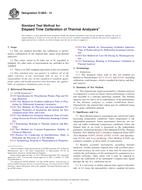 ASTM E1860-13
ASTM E1860-13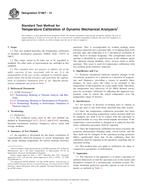 ASTM E1867-13
ASTM E1867-13 ASTM E1953-14
ASTM E1953-14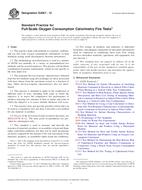 ASTM E2067-12
ASTM E2067-12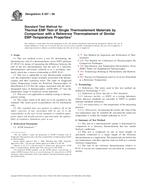 ASTM E207-08
ASTM E207-08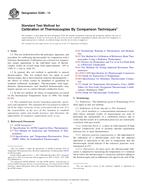 ASTM E220-13
ASTM E220-13
 Cookies
Cookies
